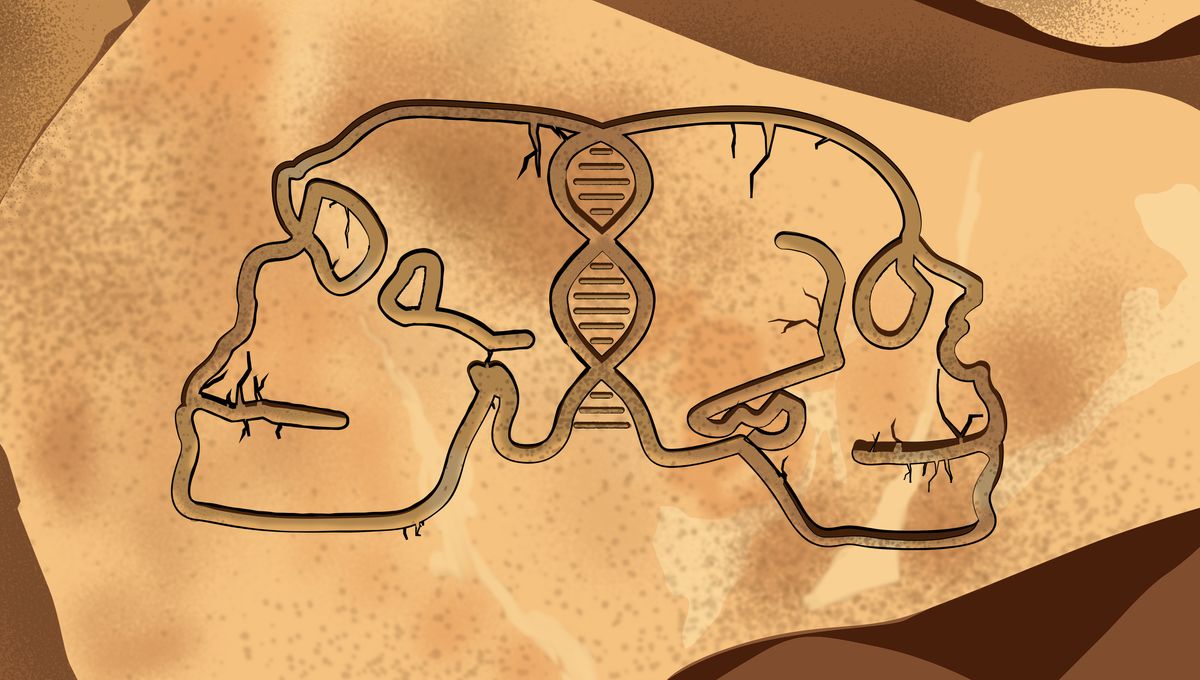
When human ancestors dispersed out of Africa over 50,000 years ago, they encountered Neanderthals that already carried some of their genes.
Today we are the only human species in the world, but it wasn’t always like that. Four hundred thousand years ago, when Homo sapiens’ ancestors lived in East Africa, Neanderthals already lived in Eurasia. When the only way to get around is on foot, that is literally worlds apart. Nevertheless, 50,000 years ago H. sapiens arrived in Europe, and Neanderthals disappeared. An unlucky coincidence? Killed by our ancestors? The subject has long been debated.
In 2010, the Neanderthal genome was sequenced and traces of their DNA were found in modern human genomes, suggesting a story of (maybe even loving) contact between these ancient humans. Since then, the bits of Neanderthal genome found in contemporary humans have been linked to COVID-19 susceptibility, Type 2 diabetes, and even autism.
Recent studies flipped the question around, looking at how many H. sapiens genes were present in the Neanderthal genome. A new story emerged, one in which H. sapiens made the harrowing journey (on foot!) out of Africa multiple times, meeting Neanderthals and having babies with them.
In a new study, Liming Li and colleagues analyzed 2,000 human, three Neanderthal, and one Denisovan genome and looked at the flow of genetic information between these hominins over a 200,000-year period. They found 2.5-3.7 percent of human ancestry in Neanderthal DNA, which is surprisingly more than the 2 percent of Neanderthal DNA found in contemporary humans.
According to their model, two waves of human-to-Neanderthal gene flow predate the final meeting 50,000 years ago: one around 250,000 to 200,000 years ago, and the second around 120,000 to 100,000 years ago, a time consistent with the presence of a Nile-Sinai land bridge connecting Africa and Europe. In both of these events, H. sapiens arrived in Europe, bred with Neanderthals, and the offspring and their genomes were likely assimilated into the Neanderthal populations.
When a wave of H. sapiens met Neanderthals one last time 50,000 years ago, the gene flow changed direction and the ancestors of non-African humans assimilated Neanderthal ancestry. It remains an open question whether Neanderthal-to-human gene flow in African humans exclusively came after this final wave. Future studies on African genetic diversity could help discover further migration patterns within and possibly back to the African continent.
Li and colleagues also found that if they accounted for the H. sapiens component in the Neanderthal genome this reduced our estimations of Neanderthal population size by around 20 percent. They suggest that these small population sizes could have led to more interbreeding and the accumulation of deleterious mutations that were then inherited by H. sapiens.
Small populations also meant that “Neanderthals were teetering on the edge of extinction, probably for a very long time”, said Joshua Akey, senior author on the study, in a statement. The repeated encounters with H. sapiens over 200,000 years “were essentially like waves crashing on a beach, slowly but steadily eroding the beach away”, until Neanderthals faded into the sea of H. sapiens population.
The study is published in Science.
Source Link: Humans Left Africa To Hook Up With Neanderthals Earlier (And More Often) Than Thought